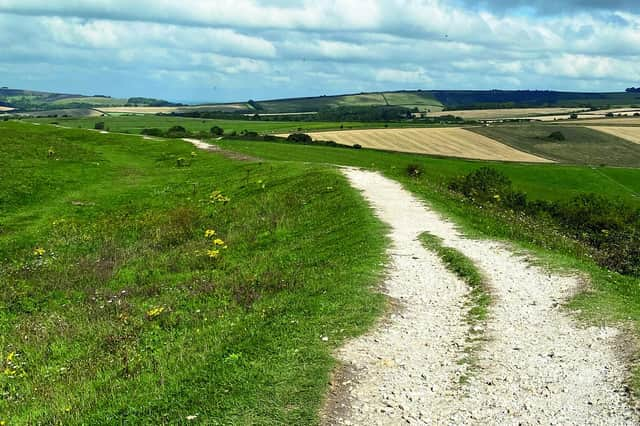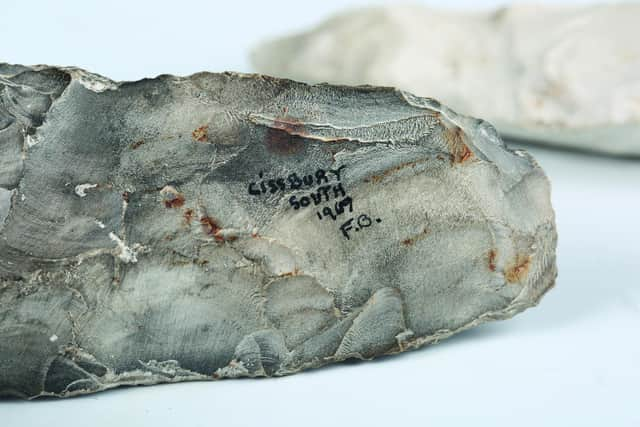Where you will find the extraordinary wealth of Neolithic sites in Sussex


Cissbury Ring is the largest hillfort in Sussex and its history stretches back over 5000 years.
It sits high up on a chalk promontory just to the north of the coastal town of Worthing and is enclosed by a ditch and ramparts which enfold some 65 acres.
Advertisement
Hide AdAdvertisement
Hide AdOn a good day the view stretches to the Isle of Wight in the west and the chalk cliffs beyond Brighton in the east.


Centuries of uninterrupted grazing over this land has allowed rare fauna, flora, butterflies, insects and birds to flourish; species like Pride of Sussex, a rare round-headed Rampion.
The site today is home to herds of wild horses too. And in autumn migratory birds pause at Cissbury – one of the first coastal landing points.
Long before the construction of the hill fort Cissbury Hill was mined for flint during the Neolithic period.
Advertisement
Hide AdAdvertisement
Hide AdRadiocarbon dating of materials from all of Britain’s flint mines show that our county’s were the earliest in the country.
It is thought that these mines were dug using deer antlers as picks and ox shoulder blades as shovels.
The hollows within the Ring show where the pits and shafts would have been and archaeological excavations have revealed struck flint flakes from the making of axe heads like the two illustrated which were discovered at Cissbury in 1967 and 1970.
These early Neolithic flint axes recently sold at a Tooveys specialist antiquities auction.
Advertisement
Hide AdAdvertisement
Hide AdCissbury Ring appears to have been a ritual burial ground in the Bronze Age.
The hillfort dates from the Iron Age and was built around 400 BC.
It is thought that the fortifications would have defended the settlement for some 300 years.
There are also signs of agriculture within the enclosure dating from around 100 BC.
Advertisement
Hide AdAdvertisement
Hide AdMillenia later its defensive position was also employed during the Second World War with a number of gun emplacements.
The Victorians pioneered archaeological investigation. George Irvine carried out the first dig in 1857 and was followed in 1867 and 1868 by Colonel Augustus Lane Fox – better known as Pitt Rivers, whose famous museum is at Oxford – together with the Reverend Canon William Greenwell.
The 30 or so pits they excavated revealed flint axes, tools, bones, teeth, charcoal, shells, and fragments of Neolithic pottery.
Toovey’s antiquities specialist, Mark Stonard, is always delighted to discuss your special finds.